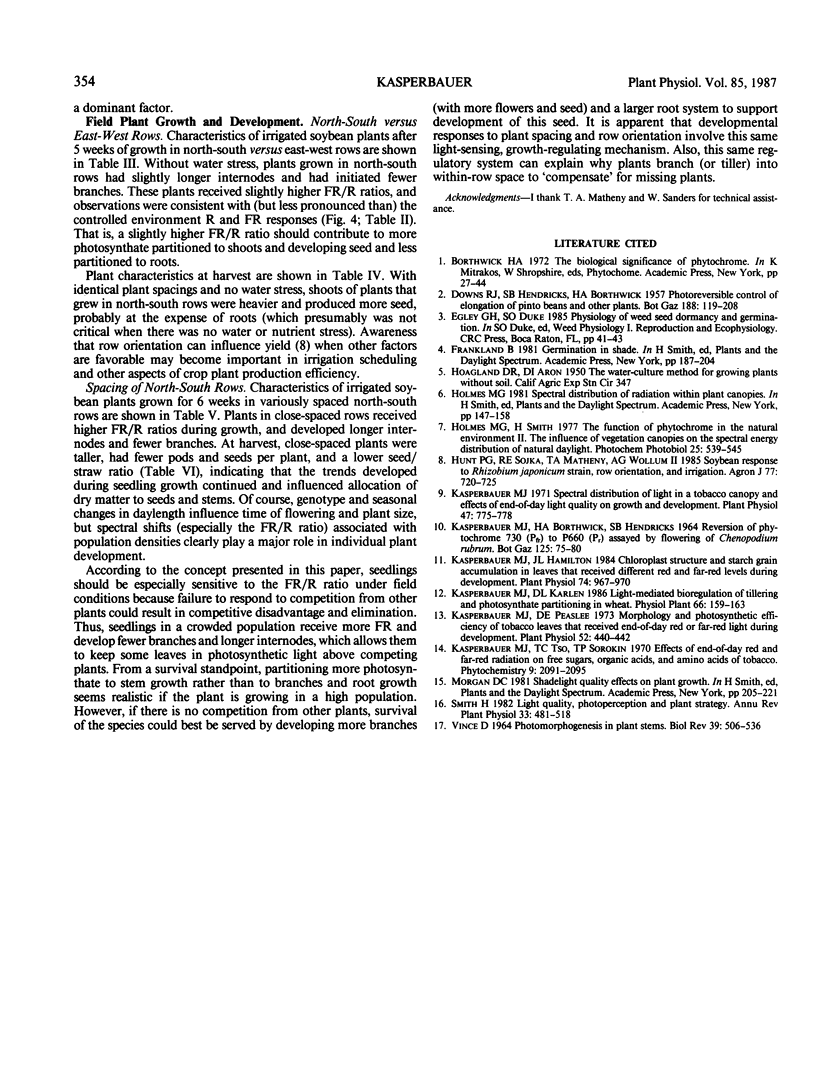Abstract
The influence of plant spacing and row orientation on spectral distribution of light received by growing soybean (Gylcine max [L.] Merr.) plants was measured under field conditions. Light absorption, reflection and transmission of individual leaves showed that most of the blue and red was absorbed while most of the far-red was either reflected or transmitted. Plants growing in the field received different ratios of far-red relative to red, depending on nearness and/or orientation of other vegetation. Plants grown in close-spaced rows, or high population densities, received higher far-red/red ratios than did those grown in wide rows, or sparse populations. Heliotropic movements of the leaves also contributed to the far-red reflection patterns associated with row orientation. Under field conditions, differences in far-red/red ratios associated with nearness of competing vegetation became more pronounced with low solar angle near the end of the day. Plants exposed to far-red for 5 minutes at the end of each day in controlled environments, and those grown in close-spaced rows in the field, developed longer internodes and fewer branches. Red, far-red photoreversibility in the controlled environment study indicated involvement of phytochrome. Dry matter partitioning among plant components in the field was related to far-red/red light ratio received during growth and development.
Full text
PDF




Images in this article
Selected References
These references are in PubMed. This may not be the complete list of references from this article.
- Kasperbauer M. J., Hamilton J. L. Chloroplast Structure and Starch Grain Accumulation in Leaves That Received Different Red and Far-Red Levels during Development. Plant Physiol. 1984 Apr;74(4):967–970. doi: 10.1104/pp.74.4.967. [DOI] [PMC free article] [PubMed] [Google Scholar]
- Kasperbauer M. J., Peaslee D. E. Morphology and Photosynthetic Efficiency of Tobacco Leaves That Received End-of-Day Red and Far Red Light during Development. Plant Physiol. 1973 Nov;52(5):440–442. doi: 10.1104/pp.52.5.440. [DOI] [PMC free article] [PubMed] [Google Scholar]
- Kasperbauer M. J. Spectral Distribution of Light in a Tobacco Canopy and Effects of End-of-Day Light Quality on Growth and Development. Plant Physiol. 1971 Jun;47(6):775–778. doi: 10.1104/pp.47.6.775. [DOI] [PMC free article] [PubMed] [Google Scholar]



